- Home
- Lynne Truss
Get Her Off the Pitch! How Sport Took Over My Life Page 10
Get Her Off the Pitch! How Sport Took Over My Life Read online
Page 10
So, what is sports journalism, really? Take away the mystique created by the fact that it’s all highly-excluding gobbledegook to people who don’t care, and it’s pure, basic journalism: stories concern exceptional people doing stuff, exceptional people talking about stuff they’ve done, and the very same set of exceptional people being quizzed about stuff they might do in the future. As an exercise recently, I bought all the broadsheet newspapers every day for a week and cut out all the sport. Then I left the pages in a heap on the floor of my office for a number of months, so that their news value could mature, or ferment, or - whatever. My rather feeble idea was that, once the spurious next-day interest had safely passed, I could analyse (or at least measure and add up) the coverage of everything in them, from football to bowls, and see how stories developed from day to day. The gathered pages weighed 1.4 kilos, and my first impression was that it wasn’t a particularly interesting week, so they wouldn’t take long to read. But once I started, I was compelled to revise the original plan. Studying just the first day’s coverage - on the arbitrarilychosen start date of Thursday January 24, 2008 - took me two days, and was utterly, utterly absorbing. At the end of it, I admit that I still didn’t care much that James Toseland (motorcycling) had come 11th in Sepang (Malaysian Grand Prix), or that a strange breeze off the south-east coast of Australia (some sort of sailing event) had made a race go funny, but I was satisfied that not a single crumb of sport-related news had been ignored.
The night before January 24 had seen a fairly big football match: Everton v Chelsea in the second leg of the Carling Cup semi-final (Chelsea won 3-1 on aggregate, and by 1-0 on the night). The one, solitary goal of the match was scored by Joe Cole in the 69th minute (i.e. well into the second half ) - and by all accounts it was a well-executed one-touch drive from a long ball from Florent Malouda, a gravity-defying volley which made the main picture in all the papers (in fact, it was exactly the same Reuters picture in all of them). Now, 156 column inches of print were, in total, devoted to this game, with each paper running at least two pieces: usually, a match report and a more reflective piece, plus lots of pictures. Martin Samuel in The Times was alone in mentioning what a dull evening it was at Goodison Park - ‘The game was tired and tame…the occasion was muted’ - but it was obvious to anyone that this game was a considerable let-down after the other, far more action-packed semi-final second leg the previous night between Arsenal and Tottenham (not only six goals scored, but a punch-up between Arsenal team-mates).
Elsewhere, in the Independent, from an extremely detailed match report from Ian Herbert we learned not only that the occasion pitched the ‘flash fluorescence of Chelsea…against sheer Evertonian spirit’, but such minute-by-minute information as that, at one point, Shaun Wright-Phillips’s movement flummoxed Lee Carsley and led to an ugly challenge on the midfielder for which Carsley was booked on 24 minutes. I have no idea, by the way, how anyone’s brain can retain such details of footballing action when events have moved on - retain them, that is, long enough to set them down in words. I mean, this stuff does all happen very quickly. In my experience of trying to keep up with football matches while writing at the same time, you would have time only to say, at most, ‘Why did he do that?’ or, ‘Would you say Carsley was flummoxed there?’ or (more likely in my case), ‘What happened? Did anyone see what happened?’ before play resumed, and another foul took place, and the whole original incident was wiped from one’s mind.
This is the skill of match reporting - a skill I never even attempted to acquire. ‘It was left to [Mikel] Arteta to carve out the best chance of the game when he delivered another perfect ball for Andrew Johnson who reversed and span with the ball in his path before taking it into the penalty area, only to find the side netting,’ writes Herbert. Good heavens. What a good description. I once worked alongside a football correspondent at the World Cup in France who, while watching - and presumably mentally noting - such ball-by-ball detail at the start of the second half of England v Argentina, was dictating from memory a report of the action in the first. And I could hardly contain my admiration for either his sang froid or the capacity and flexibility of his brain. I eavesdropped openly on what he was saying, by the way, and everything he described - chaps reversing and spinning, or flummoxing other chaps - I could not remember seeing.
How was the match-reporting space filled, then, on January 24, 2008, if not by the drama of the occasion at Goodison Park? Well, despite the dullness of the evening and the paucity of goals (or even chances), there was still a huge amount to say about Everton losing to Chelsea in the second leg of a Carling Cup semi-final - because, quite frankly, look at any match and there always is. For one thing, this was a rare silverware opportunity for Everton, whose last excitement on such a scale was back in 1995. What a crushing blow for the fans, then. David Moyes, the Everton manager, said afterwards that it was a brilliant effort by the lads, ‘but we need to find that extra ingredient that gets us to Cup finals and wins Cup finals’ - which, like most such inadequate post-match statements by managers would hardly give hope to the thousands of miserable supporters who already knew all about Everton lacking the magic ‘winning’ ingredient. They had woken up each day knowing this, and gone to bed each night knowing it, year after year.
Meanwhile, Nicolas Anelka - who, at this point, had been on the Chelsea strength for less than two weeks, having just transferred from Bolton at a cost of £15 million - had hit the bar in the second minute of the second half, but maybe had not contributed as much to the Chelsea victory as some had wished for. But on the other hand, how much could a man whose cumulative transfer fees now totalled £80 million really care about the Carling Cup? New-ish England manager Fabio Capello had watched the match from the directors’ box, so there was speculation that he would be including Joe Cole in his immediate England team-selection plans. And what else can I tell you; what else? Captain of Chelsea John Terry wasn’t playing, but - rather excitedly - one of the match reporters tells us that ‘it was reported’ (so he didn’t see it himself ) that Capello and Terry actually ‘spoke at half time’!
Astonishingly (I’m sorry), there is yet more of incidental interest to be gleaned from this game. Oh yes. Don’t forget we are talking about 156 column inches here. Chelsea goalkeeper Peter Cech (who saved a header from Joleon Lescott) had become a father for the first time earlier that day. Although both teams had lost players to the African Cup of Nations competition, Everton missed theirs more, for the obvious reason that they couldn’t afford to just go out and buy Nicolas Anelka. Some of the Chelsea fans had come all the way from Cyprus. Of historical note was the fact that Frank Lampard’s father (also called Frank Lampard) was responsible, nearly thirty years ago, for the goal that deprived Everton of a place in the 1980 Cup final - a fact so incredibly interesting that the Telegraph man put it in, even though neither of the illustrious Frank Lampards was on the pitch for the game under consideration. A victory for Chelsea at Wembley (against Tottenham) would give them their sixth trophy in four seasons. The din from the Everton crowd ‘lacked some of the poetic soul of Anfield, but it was raw and raucous and fitted the occasion perfectly’ - which I have no doubt is true, but is surely a bit of an additional insult to the Everton fans. They can’t even shout as well as Liverpool? And Avram Grant, Chelsea’s manager, was (possibly) finally emerging from the daunting shadow of his glamorous, smouldering, dog-smuggling predecessor Jose Mourinho.
Besides the match report, there is a raft of football news. Jonathan Woodgate, playing for Middlesbrough, might be going to Newcastle. In fact all four papers report the fact that Kevin Keegan, managing Newcastle, is keen to bid for Woodgate - although other clubs are keen, too. (In fact, Woodgate signed for Tottenham four days later.) Emmanuel Adebayor, the starry Arsenal striker who head-butted a team-mate during the other Carling Cup semi-final, has made a statement saying that it was all down to his zeal - his ‘passion’ for the game getting regrettably out of hand. The victim of the assault, the young Danish inte
rnational Nicklas Bendtner, is reported to be unpopular with his team-mates, and it is recalled that Arsenal are not good losers in any case (something quite similar happened last season). The Guardian notes that Arsenal’s manager Arsène Wenger is furious, which, for obvious reasons, doesn’t have much impact as news. Arsène Wenger is always furious. The Guardian also suggests that Bendtner ‘raked Adebayor’s achilles’ (no one else says this, and there is no evidence), and offers a fabulous little picture feature entitled ‘When Team Mates Attack’, with famous incidents such as John Hartson kicking Eyal Berkovic in the head at West Ham’s training ground in 1998. (I seem to remember this was put down to over-excitement, too.)
The remaining big football stories are similarly teeny-weeny (you might think) but of considerable interest. For example, Sir Alex Ferguson (speaking in Riyadh, where Manchester United are having a little holiday) sympathises publicly with Liverpool’s manager Rafael Benitez over the lack of support he seems to get from the owners of the club. This is a massive story in three of the papers. Meanwhile there is speculation about who will take over as manager at Southampton, now that George Burley has been cleared to take the job of managing the Scottish national team. Front-runners are generally agreed to be Glenn Hoddle (pictured), Alan Shearer, Kevin Blackwell and Billy Davies. (Three weeks later, Nigel Pearson was appointed.) Following up from the Tottenham victory on Tuesday night, there are stories on manager Juande Ramos, and the reassuring news for Tottenham fans that the Bulgarian striker Dimitar Berbatov is not going anywhere. ‘I look happy, don’t I?’ Berbatov is quoted as saying. ‘This club can challenge for trophies.’ (In the Carling Cup final a month later, Berbatov scored an equalising penalty, helping Tottenham to win 2-1. Two months after that, in April, he is quoted as saying he quite fancies playing for Milan. In September he completes a move to Manchester United for a fee of £30.75 million.)
Such is the football coverage for one very average day. The rest of the pages are similarly thorough - and just as unmissable for anyone interested in sport. In tennis, it’s getting to the closing stages of the Australian Open, and all eyes are on the 20-year-old Serbian, Novak Djokovic, who is about to meet the world number one Roger Federer in the semi-final of the men’s singles (and go on to win the tournament, as it happens). It is generally agreed that Djokovic is now right up there with Federer and Nadal, and that this is exciting. Mark Hodgkinson in the Daily Telegraph describes Djokovic as having ‘an all-round air of self-confidence that makes Russell Brand look shy and retiring’. Neil Harman in The Times describes how Djokovic lost concentration in the last game of his quarter-final: ‘He frittered away serve after serve, while having to deal with taunts from his own supporters.’ Meanwhile Steve Bierley in the Guardian is all praise: ‘He has achieved a level of controlled excellence, combined with an unbending mental fortitude, that has lifted him to an undisputed third place in the world, behind Nadal and Federer.’
Alongside all this news there are opinion pieces and celebrity columns, the most bizarre of which is a very defensive and strongly worded piece in The Times about it being perfectly all right for men to ogle women tennis players, especially when they look like the four hottie singles semi-finalists in Melbourne: viz, Jankovic, Hantuchovna, Ivanovic and Sharapova - all of whom are pictured in red-carpet evening dress mode, with their long hair down, one of them in a very, very, very short skirt. ‘There has always been a soft-porn dimension to women’s tennis,’ states Matthew Syed - and having worked on the sports pages myself, I know that this view is not a new one, and that the idea for this piece may have originated quite high up in the paper. Syed argues that, since women are allowed to ogle male rugby players (and clearly do, to his annoyance, all the time), it’s hypocrisy to criticise the red-blooded male custom of seeing female tennis players as sex objects. Besides (he goes on), don’t these female tennis players pose provocatively for photographs all the time? Don’t they trade on it? ‘That we have not, as a society, reached a place where heterosexual men can acknowledge the occasional erotic dimension of watching women’s sport without being dismissed as deviant tells us everything we need to know about contemporary sexual neuroses.’
All this explains, I think, why my dipping into the sports pages in 1991 was such a disaster. It was me. I simply wasn’t up to speed, was I? I didn’t know that sport - as a subject for newspaper coverage - was so earnest, so involved, and so aware of itself as a continually unfolding story. When I now look at the Times coverage of Agassi at Wimbledon in 1991, I find it well-informed, often spot-on in terms of his talents and potential, and even funny. The background information I wanted is there, after all; just deftly included in the match reports. All my other objections melt away, too. The idea that a newspaper account of a match should be some sort of adjunct to yesterday’s television coverage strikes me as silly (and even offensively so); meanwhile, the Bechuanaland posture of our-man-on-the-spot is delightful and the main appeal of the report. The authority that comes with being present at an event is the cornerstone of sports journalism. Not being present at an event you write about is, I think, the only automatic sacking offence. It’s just a shame that so few writers do anything to remind you of their presence - no mention of the cold and dark at the Goodison match, for example. Was it raining, perhaps? Did a sharp wind blow from the end where the church is? What state was the pitch in? Did Chelsea wear yellow? Did Everton wear blue? Was there that special football-ground smell of fried onions mixed with fresh manure (from the police horses)? Unfortunately, such namby-pamby descriptive stuff is sniffily classed as ‘colour’, and is left to soft old literary types like me.
Of course, no one would want to read, in a match report, about the conditions the writers work under - the narrow tip-up desk at the halfway-line, where you sit trying to write 900 words for delivery ‘on the whistle’, surrounded by other reporters doing the same thing, tightly shoulder to shoulder, some of them calling the office, others broadcasting on club radio, and all of them wonderfully stolid in their refusal to get involved, in any way whatsoever, in crowd behaviour - especially Mexican waves. This bah-humbug attitude to crowd self-entertainment makes the press a bit unpopular sometimes, but that’s tough. ‘Oh God, no,’ the reporters groan, when some bright spark starts one of these tedious group celebrations. ‘Whoooaaa!’ goes the wave, round one end of the stadium; ‘WHOOOAAAA’ it goes round the other. Then the wave slops up against the press box, where the occupants remain seated. Then, perfectly on cue, it starts up again the other side of the obstacle, ‘Whoooaaa!’ And off it goes again. As someone who hasn’t been in a press box for a while, I like to watch Mexican waves whenever they’re reported on the telly, just so that I can see where the hiatus takes place, and send telepathic killjoy support to all my suffering killjoy chums.
When I first heard about the ‘press box’, by the way, I naïvely assumed that the term implied enclosing walls, and even a ceiling and floor. I expected comfy seats and a picture window. Possibly cups of tea with saucers. What I soon learned, however, was that where press boxes actually were enclosed, they were ghastly; the benefits (of warmth, and safety from missiles) were easily outweighed by the fact that you can’t hear properly, have to combat claustrophobia, and get much more distracted by your colleagues, who might be chatting, eating, smoking, or loudly dictating dismayingly unrecognisable descriptions of the footie you’ve just been watching. At cricket grounds - where the matches last considerably longer than 90 minutes, of course - the reporters do sit indoors, behind glass, and are completely cut off from the atmosphere. At Lord’s, the famous spaceship press centre (on stilts) is fronted by sound-proofed tinted windows, and on the one occasion I worked in it, I hated it. I kept having to shake off the sensation that I had suddenly gone deaf.
In addition to the outdoor ‘press box’ at football stadiums, there is usually a dingy lounge of some description, with a TV in it, bolted to the wall. In my day, this lounge would sometimes offer the luxury of electrical sockets, but there was no guara
ntee. Oh, the misery of those footie press lounges. All the charm of a working man’s club at ten in the morning. The lounge at Coventry City’s Highfield Road had been cunningly adapted from some sort of airless subterranean cupboard, half of it taken up by a flight of carpeted stairs, with only five chairs for 28 people, and when you said, ‘Any chance of a cup of tea?’ they looked at you in disgust and snapped (as if it was reasonable), ‘Not until half time!’ I remember turning up there one day when the match was sponsored in some way by Yorkie bars. I think I was the first to arrive, and I watched with interest as a man with a box of Yorkies distributed about two dozen bars around the place. That ought to keep a few spirits up, I thought, innocently. A few minutes later, a couple of local sports writers arrived, and one of them said, ‘Oh good,’ and put the full two dozen in his bag. ‘Kids’ lunches,’ he explained - as if that made it all right, then. ‘The wife went nuts when she found out I didn’t get them all last time.’

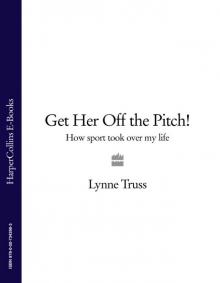 Get Her Off the Pitch! How Sport Took Over My Life
Get Her Off the Pitch! How Sport Took Over My Life Going Loco
Going Loco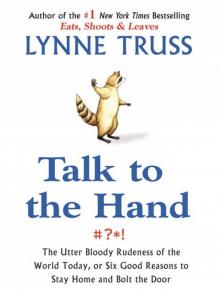 Talk to the Hand
Talk to the Hand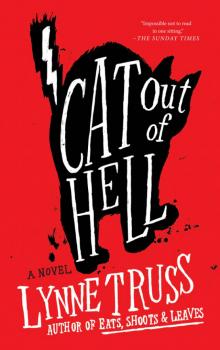 Cat Out of Hell
Cat Out of Hell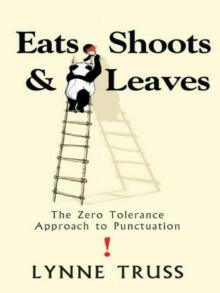 Eats, Shoots and Leaves
Eats, Shoots and Leaves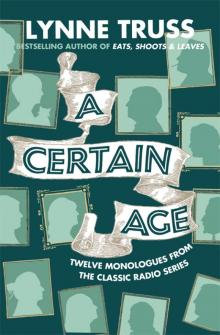 A Certain Age: Twelve Monologues From the Classic Radio Series
A Certain Age: Twelve Monologues From the Classic Radio Series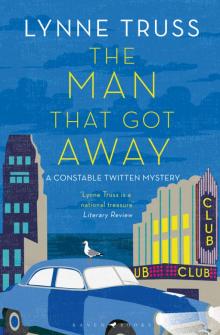 The Man That Got Away
The Man That Got Away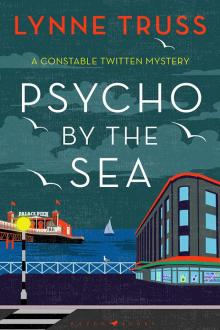 Psycho by the Sea
Psycho by the Sea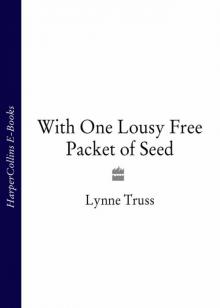 With One Lousy Free Packet of Seed
With One Lousy Free Packet of Seed Tennyson's Gift: Stories From the Lynne Truss Omnibus, Book 2
Tennyson's Gift: Stories From the Lynne Truss Omnibus, Book 2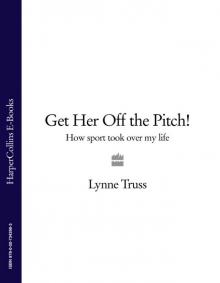 Get Her Off the Pitch!
Get Her Off the Pitch! Tennyson's Gift
Tennyson's Gift A Shot in the Dark
A Shot in the Dark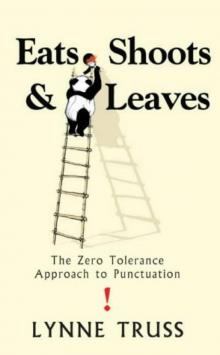 Eats, Shoots and Leaves: The Zero Tolerance Approach to Punctuation
Eats, Shoots and Leaves: The Zero Tolerance Approach to Punctuation